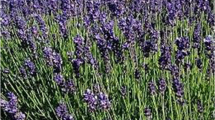Abstract
A CHEMICAL structure closely similar to type XIV pneumococcus polysaccharide is probably the basic substrate used in the formation of the human A, B, H and Lea blood group specific substances1. Studies of the precipitation of the various blood group specific substances and related materials by Ricinus communis seed extract suggest that the activity of the Ricinus precipitin is directed towards the basic chemical framework of the human blood group substances2–4. It is thus possible that the Ricinus precipitin is actually specific for type XIV pneumococcus polysaccharide. The following experiments were carried out to investigate this possibility.
Similar content being viewed by others
References
Watkins, W. M., and Morgan, W. T. J., Vox Sang., 4, N.S. 97 (1959).
Bird, G. W. G., Ph.D. thesis, University of London (1958).
Bird, G. W. G., Brit. Med. Bull., 15, 165 (1959).
Bird, G. W. G., Vox Sang., 4, N.S. 313 (1959).
Boyd, W. C., and Reguera, R. M., J. Immunol., 62, 333 (1949).
Ouchterlony, O., Acta Path. Microbiol. Scand., 32, 231 (1953).
Author information
Authors and Affiliations
Rights and permissions
About this article
Cite this article
BIRD, G. Anti-Pneumococcus Type XIV Activity of Precipitins from Ricinus communis Seeds. Nature 187, 415–416 (1960). https://doi.org/10.1038/187415a0
Issue Date:
DOI: https://doi.org/10.1038/187415a0
- Springer Nature Limited
This article is cited by
-
Seed Agglutinin with Specificity within the Rhesus Blood Group System
Nature (1968)
-
Organ-specific phytoprecipitins against the thyroid gland
Bulletin of Experimental Biology and Medicine (1967)
-
Autohaemagglutinins
Blut Zeitschrift für die Gesamte Blutforschung (1966)
-
Anti-T agglutinins fromAreca catechu linn
Experientia (1965)
-
A Mucoid isolated from Bovine Red Cells exhibiting Strong Pneumococcus Type XIV Cross-reactivity
Nature (1963)





